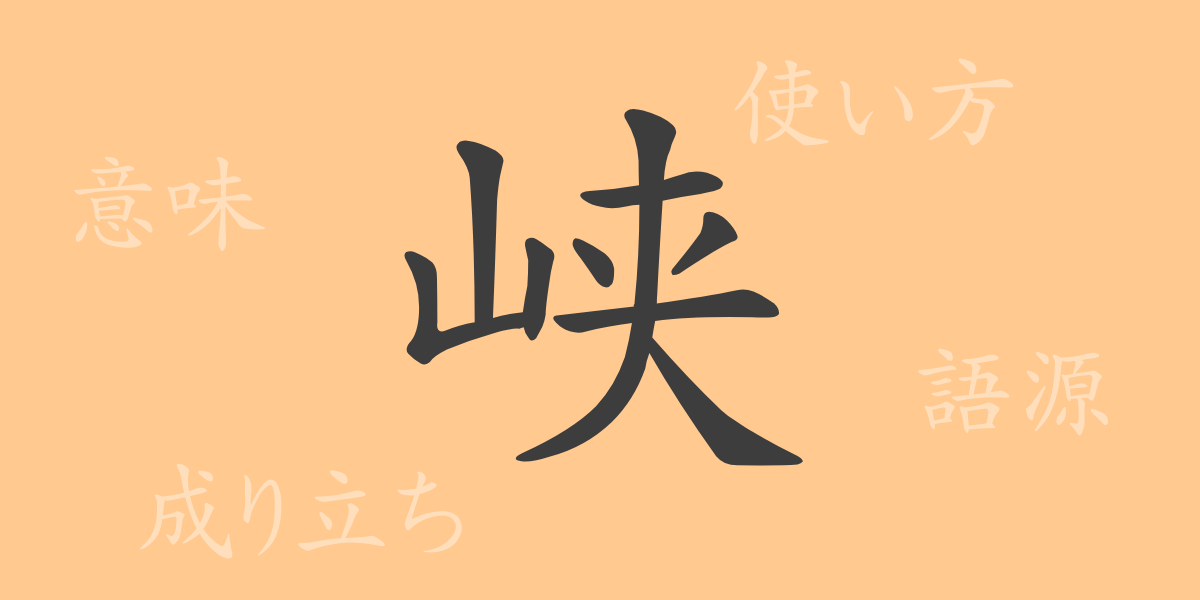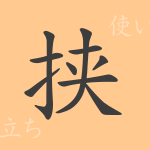Japanese contains many unique kanji characters that represent beautiful natural phenomena and emotions. “峡(きょう)” is one of these kanji, representing an aspect of Japan’s culture and natural landscape. In this article, we will delve into the origins, meanings, uses, and idioms related to “峡(きょう),” exploring its fascinating charm.
Origin of 峡(きょう)
The kanji “峡(きょう)” means a narrow and deep valley formed between mountains. Tracing its origins, it is believed that this character was created in ancient China to depict a series of mountains with a long, narrow valley formed between them. Additionally, “峡(きょう)” is composed of “山(やま)” meaning mountain, and “夾(きょう)” meaning to pinch, indicating “a valley pinched by mountains.”
Meanings and Uses of 峡(きょう)
The primary meaning of “峡(きょう)” is a narrow, deep valley between mountains or a similar terrain. It is often used in the context of physical geography, commonly appearing in terms like “峡谷(きょうこく)” (canyon). For example, famous Japanese locations such as “富士川峡(ふじかわきょう)” and “立山黒部アルペンルートの黒部峡谷(たてやまくろべあるぺんるーとのくろべきょうこく)” are well-known places that feature this kanji.
Readings, Stroke Count, and Radical of 峡(きょう)
The kanji “峡(きょう)” has specific readings and structure:
- Readings: The on-yomi (音読み) reading is “キョウ(きょう),” and the kun-yomi (訓読み) reading is “はざま(hazama).”
- Stroke count: 峡(きょう) consists of 9 strokes.
- Radical: The radical for this kanji is 山部(やまへん) (mountain).
Idioms, Proverbs, and Phrases Using 峡(きょう)
There are many idioms, proverbs, and phrases that include “峡(きょう).” Here are some examples:
- 峡谷(きょうこく) – A narrow, deep valley between mountains.
- 山峡(さんきょう) – A narrow valley surrounded by mountains.
- 風峡(ふうきょう) – A narrow valley where strong winds blow through.
These terms are often used to describe the grandeur and majestic scenery of nature.
Summary of 峡(きょう)
The kanji “峡(きょう)” is a symbol of Japan’s natural beauty and strength, representing narrow valleys between mountains. This character is deeply connected to Japan’s landscape and culture, with its name found in many famous sites across the country. By understanding the readings, stroke count, radical, and idiomatic expressions related to “峡(きょう),” we can appreciate the depth of meaning this kanji holds and enjoy the beauty of the Japanese language even more.

























